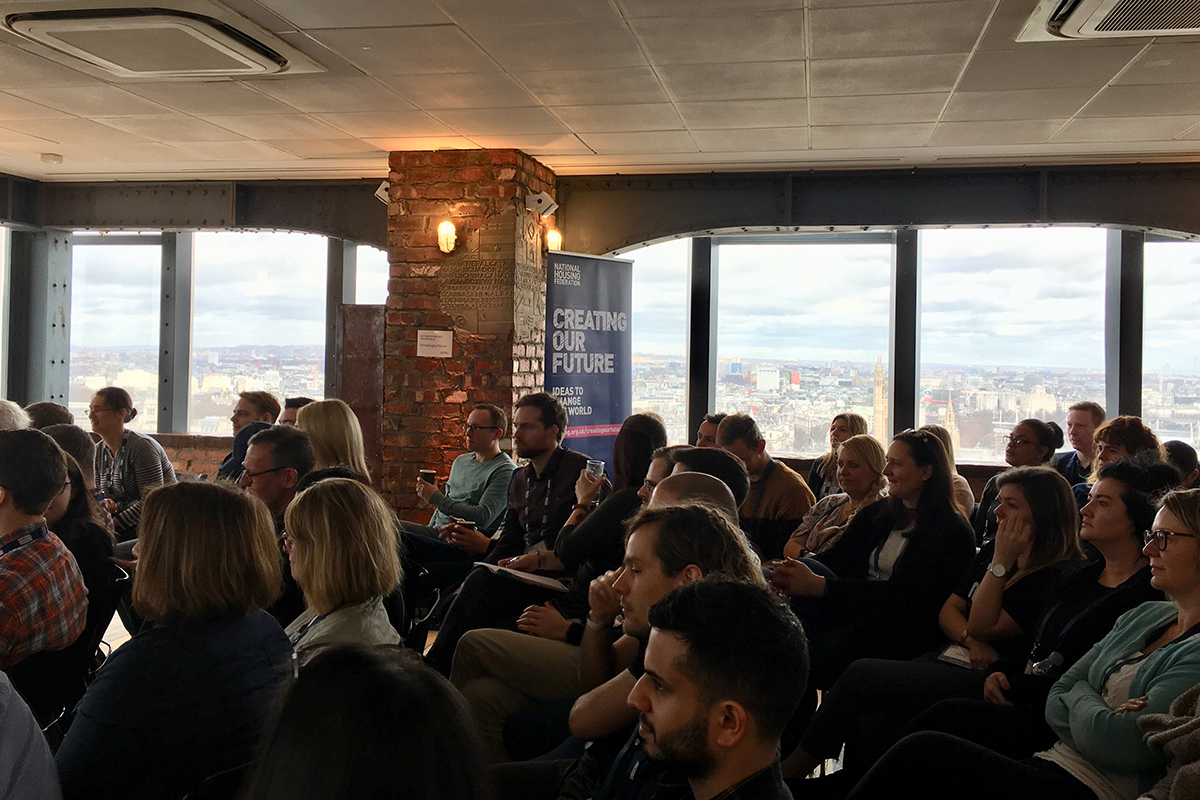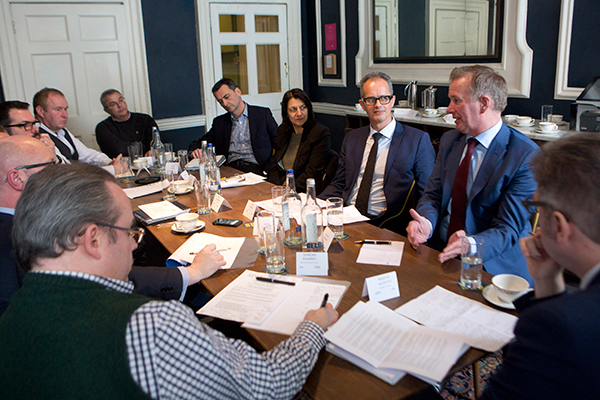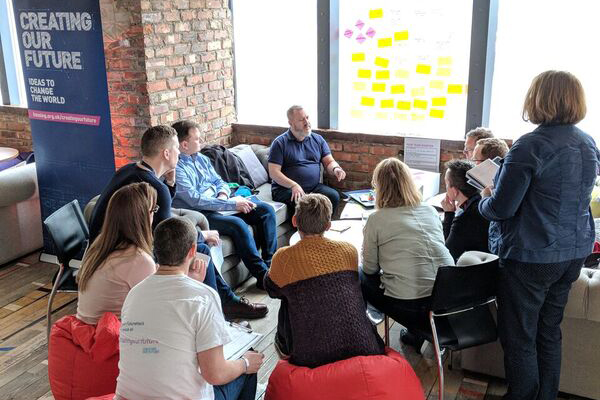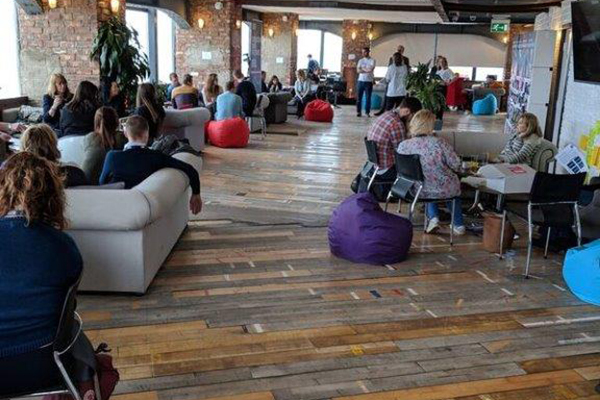You are viewing 1 of your 1 free articles
Ideas for the future: the NHF's huge social innovation project
The National Housing Federation is attempting to bring together the whole sector for a huge social innovation project. Nathaniel Barker finds out what it all means
Millbank Tower has seen the genesis of some very important ideas in its time – perhaps more than almost any other building in the UK. The 30-storey skyscraper, which looks out over the Thames half a mile upstream from the Palace of Westminster, was the headquarters for Tony Blair’s historic 1997 election campaign. It was also once home to the Conservative Party, and the United Nations has previously occupied offices here.
It is the perfect location then, for the National Housing Federation’s (NHF) ‘Future Hack’, the latest stage in a year-long process through which it hopes to create an idea “that will change the world”.
Last week, around 50 housing association employees from across the country spent three days stationed on the tower’s 28th floor, against a panoramic backdrop of London’s skyline, in pursuit of inspiration. Inside Housing went along to see what it was all about.
Future Hack is part of the NHF’s ‘Creating our Future’ initiative, explains programme director James Green.
It was born out of ‘Owning our Future’ – a campaign aimed (with some success, most would agree) at making housing a key issue in the 2017 general election.
“It was during that work around Owning our Future and various other things that there was a real sense among housing associations that if the last 10 years has been a period of unprecedented change, it’s going to be like nothing compared to the next 10 years,” says Mr Green. “This is about how we as a sector can collaborate across the country across all the different organisations, to deliver on our social purpose in new ways.
“And a really important part of this is recognising that there is a lot that we can ‘just do’. We can just do by thinking differently and creatively, and coming together in new ways. So we were very clear from the outset this is not about looking to government or anybody else. This is about what can we do as a sector.”
Simply put, the goal is for Creating our Future to result in a handful of novel solutions to various aspects of the housing crisis which will be implemented and ultimately rolled out across the wider housing association sector.
"This is not about looking to government or anybody else. This is about what can we do as a sector," James Green, National Housing Federation
The programme started with six months of research into what the sector considers to be the key social challenges faced by the people it serves. Once these were identified and categorised, the NHF held a series of ‘ideas lab’ workshops, which saw a total of 300 people from 150 associations come together to generate possible ideas.
At Future Hack, people nominated by their housing associations broke off into 10 teams to develop the best of the ideas lab yield into initial prototype models. The ideas are split into five themes: ‘Building Better’, ‘Transforming Tenure’, ‘Adapting with Age’, ‘Halting Homelessness’ and ‘People Powered’.
Around half of the people in attendance will be selected to take part in the next stage of the programme: ‘the Greenhouse’. Here, they will work full-time for 16 weeks to transform the leading concepts into fully formed prototypes. Then, some time in the autumn, the final ideas will be able to bid for £15m of funding offered by social investment bank Big Society Capital in order to become reality.
“No one has ever tried social innovation – that’s finding new ways to tackle the big social challenges we face – on a sector-wide level before; no one’s ever tried it at this scale,” says Mr Green.
David Orr, chief executive of the NHF, believes the process could be significant beyond the products or services that it produces. “I think it’s about encouraging housing associations to be their own innovators,” he says. “Not to wait until they’ve got permission from someone else, but to be their own providers of their own internal permissions.
“And to learn more effectively – and a lot of this is already happening, but to learn even more effectively how to be innovators, how to think innovatively. And then once you’ve done that, how to turn the good ideas into practical delivery.”
That, he posits, will have multi-faceted benefits for the housing association sector – both in terms of being bold enough to tackle problems independently and in making more effective use of money received from the government.
At the end of three intense days, the 10 teams pitched their ideas to the rest of the group and a panel of judges.
The suggestions included a new Rent to Buy-style tenure product, called Rent.Buy.You; a new sector-owned modular housebuilding plant; a property-finding website designed specifically for social housing tenants; and a service for homeless people to find spare rooms.
Below are three which particularly caught the eye.
- MyPlace – an idea from one of the groups working on the People Powered theme. It takes the form of a website portal designed to bolster resident engagement, particularly among harder-to-reach groups. Users would be able to post suggestions for new initiatives or changes within their community, with others then able to vote for the most popular at the click of a button. The group pitching argued this service would allow people without the time to engage thoroughly with consultations to still have a say in their areas.
- Flexible homes – a form of building technology which allows homes to be altered quickly and easily over the course of their occupants’ lives, pitched by a group looking at the Adapting with Age theme. Walls within the home can be moved around to change the shape and size of its layout, while smart technology will advise on possible upgrades. It is intended to ease the ordeal of older people having to undergo extensive home adaptations or moving into sheltered housing. This idea was voted peer favourite by the audience.
- Moving On – the judges’ winner on presentation day, from another group with the People Powered theme. Think Rightmove for social housing tenants. The website would list all the available social housing lets in the UK, allowing people to swap homes or move to new areas more easily as their life circumstances change. It would also give ‘aspirational’ social housing tenants help to move into the private rented sector where it suits them, in order to free up space on housing waiting lists.














